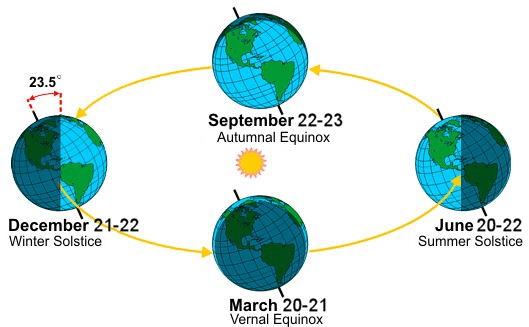The Winter Solstice marks the official beginning to winter in 2013.
It’s also the shortest day (and longest night) of the year in the Northern Hemisphere, o when the sun is lowest in the sky in the hemisphere.
“At the latitude of the park (about 40.3 degrees north) the altitude of the sun at noon is only about 26.2 degrees above the horizon,” according to the National Park Service. “This gives the impression to many that the winter light is weaker or has a different ‘quality’ than in summer. Certainly the oblique light, especially when combined with windy and/or snowy conditions, provides some unique opportunities for photographers and outdoors enthusiasts.”
Adds the National Weather Service: “In astronomy, the solstice occurs at the moment the earth’s tilt away from the sun is at a maximum. Therefore, on the day of the winter solstice, the sun appears at its lowest elevation with a noontime position that changes very little for several days before and after the winter solstice. In fact, the word solstice comes from Latin solstitium orsol (the sun) + -stit-, -stes (standing).”
While December 21 will be the shortest day of the year, it will probably not be the oldest. That’s because there’s a lag between the time and temperature. In Albuquerque, New Mexico, for instance, the coldest day will be around five days after the winter solstice. Then again, the temperature won’t rise much through January, with the forecast calling for average increases of 0.1 degrees Fahrenheit.
The opposite of the Winter Solstice is the Summer Solstice, which happens in the middle of June, when the sun is directly over the Tropic of Capicorn. It’s also the longest day of the year.





